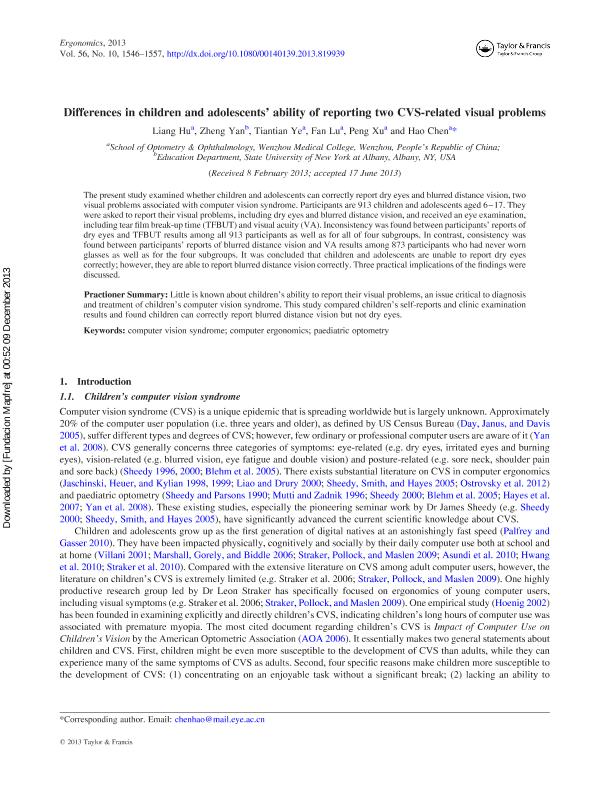Differences in children and adolescents' ability of reporting two CVS-related visual problems

Contenido multimedia no disponible por derechos de autor o por acceso restringido. Contacte con la institución para más información.
| Tag | 1 | 2 | Valor |
|---|---|---|---|
| LDR | 00000cab a2200000 4500 | ||
| 001 | MAP20130040721 | ||
| 003 | MAP | ||
| 005 | 20131209105116.0 | ||
| 008 | 131209e20131007esp|||p |0|||b|spa d | ||
| 040 | $aMAP$bspa$dMAP | ||
| 084 | $a875 | ||
| 245 | 0 | 0 | $aDifferences in children and adolescents' ability of reporting two CVS-related visual problems$cLiang Hu...[et.al] |
| 520 | $aThe present study examined whether children and adolescents can correctly report dry eyes and blurred distance vision, two visual problems associated with computer vision syndrome. Participants are 913 children and adolescents aged 617. They were asked to report their visual problems, including dry eyes and blurred distance vision, and received an eye examination, including tear film break-up time (TFBUT) and visual acuity (VA). Inconsistency was found between participants' reports of dry eyes and TFBUT results among all 913 participants as well as for all of four subgroups. In contrast, consistency was found between participants' reports of blurred distance vision and VA results among 873 participants who had never worn glasses as well as for the four subgroups. It was concluded that children and adolescents are unable to report dry eyes correctly; however, they are able to report blurred distance vision correctly. Three practical implications of the findings were discussed. | ||
| 773 | 0 | $wMAP20100019818$tErgonomics : the international journal of research and practice in human factors and ergonomics$dOxon [United Kingdom] : Taylor & Francis, 2010-$x0014-0139$g07/10/2013 Volumen 56 Número 10 - octubre 2013 |

